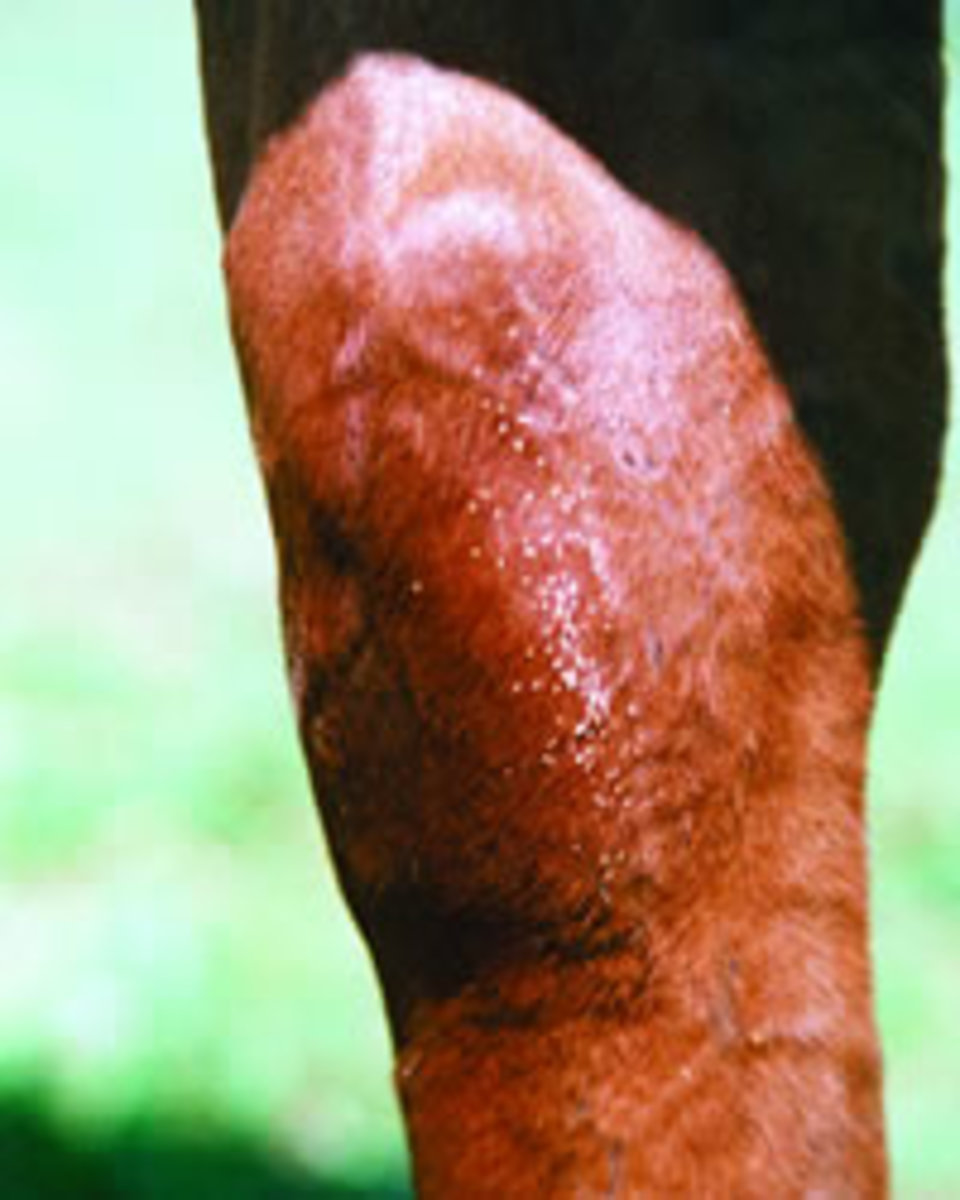Home > Horse Care > The unique challenge bots flies pose to horsekeepers
The unique challenge bots flies pose to horsekeepers
- September 9, 2024
- ⎯ Christine Barakat with Melinda Freckleton, DVM
Listen here:
Smart deworming decisions are based on regular fecal egg-count tests that identify which horses in a herd need to be treated for particular parasites. This guidance, however, doesn’t apply to controlling bots.
The difference lies in the life cycle of botflies: There are no bot eggs in manure to detect. That means protecting your horse requires other measures.

Flies in the Oestridae family, bots lay eggs on areas of the horse’s body that he can reach with his muzzle. When a horse licks the eggs, they hatch and larvae enter his mouth to mature inside his gastrointestinal system. Larvae exit via manure, starting the process again.
In many regions, droves of botflies appear in the late summer and fall. So keep an eye out for bot eggs this time of year. Shaped like small grains of rice, bot eggs are sticky and yellowish. They are commonly deposited on a horse’s knees, forearms and chest. If you see eggs, remove them with one of two tools:
• a bot knife, which has a rounded blade with a serrated edge. Place the knife above the egg and scrape downward. The egg will fall to the ground, so be sure to do this far from where your horse grazes.
• a porous, fiberglass “bot block,” which can also be used to encourage shedding out. When rubbed over the coat, the block’s edge “grabs” the eggs. To clean the block itself and sharpen the edge, scrape it across a hard surface, keeping in mind that you may be leaving bot eggs behind.
If you are vigilant about looking for and removing these eggs, you can skip deworming your horse for bots this year. Don’t worry if you think one or two eggs may have slipped by—that level of infestation isn’t going to be harmful and overzealous use of dewormers will contribute to parasite resistance.
On the other hand, if you don’t regularly search and scrape, deworm your horse with a dose of moxidectin or ivermectin after the first frost in your area. A single dose will be sufficient to control the parasite for the coming year.
Don’t miss out! With the free weekly EQUUS newsletter, you’ll get the latest horse health information delivered right to your in basket! If you’re not already receiving the EQUUS newsletter, click here to sign up. It’s *free*!








